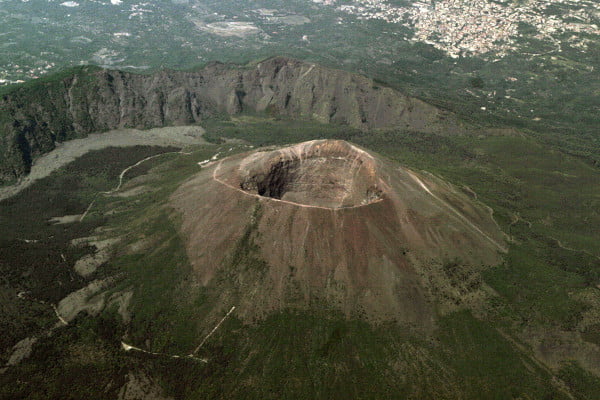How a Volcanic Eruption Destroyed Pompeii
Share:

The eruption of Mount Vesuvius is without question one of the most well-known natural disasters in history. The wake of this tragedy turned an entire city into smouldering ruins. So, what exactly happened in Pompeii?

Before getting into the most well-known eruption of Mount Vesuvius, it is important to know that this volcano had erupted multiple times prior to the Pompeii catastrophe.
Throughout ancient history, the volcano erupted on numerous occasions from as early as 6000BC.
Mount Vesuvius’ most famous eruption wasn’t instantaneous as you may think. The volcanic blast took place over the course of several days, with a series of earthquakes felt in the surrounding areas just days prior.
Despite the precluding quakes, many of Pompeii’s citizens remained within the city. It is highly unlikely they could have predicted what was to come in the following days.

The initial eruption likely commenced on 24 August 24 79CE. The first wave of the eruption saw hot pumice (volcanic rock) rain down from the skies over Pompeii. These molten rocks reached temperatures of up to 140°C.
It is though that this first wave of destruction influenced many locals to flee the city ahead of what was to come.
The following day, pyroclastic flows began to engulf the city. These collections of fast-moving, dense volcanic ash, lava, and gasses eviscerated most within its path due to the sheer heat.
Several of these flows occurred throughout the day, with the final surge from Mount Vesuvius killing all who still remained in Pompeii.

By the end of the eruption, Pompeii was buried beneath 80ft of debris and rubble from the eruption as a once wealthy and affluent city became rubble and ash.
At the end of it all, some 2,000 Pompeiians had tragically lost their lives. Some of them would have been trapped by the speed of the pyroclastic flows, which are virtually impossible to outrun.
Despite the horrendous impact it had on the city, the ash coverage actually casted somewhat of a time capsule over the city. As a result, researchers have been able to uncover numerous artefacts and develop a greater understanding of life at the time of the eruption.
The destruction of Pompeii has certainly made its mark on history, and it seems unlikely that it will ever be forgotten about. To this day, tourists visit the remains of the city to explore the preserved final moments of Pompeii.
